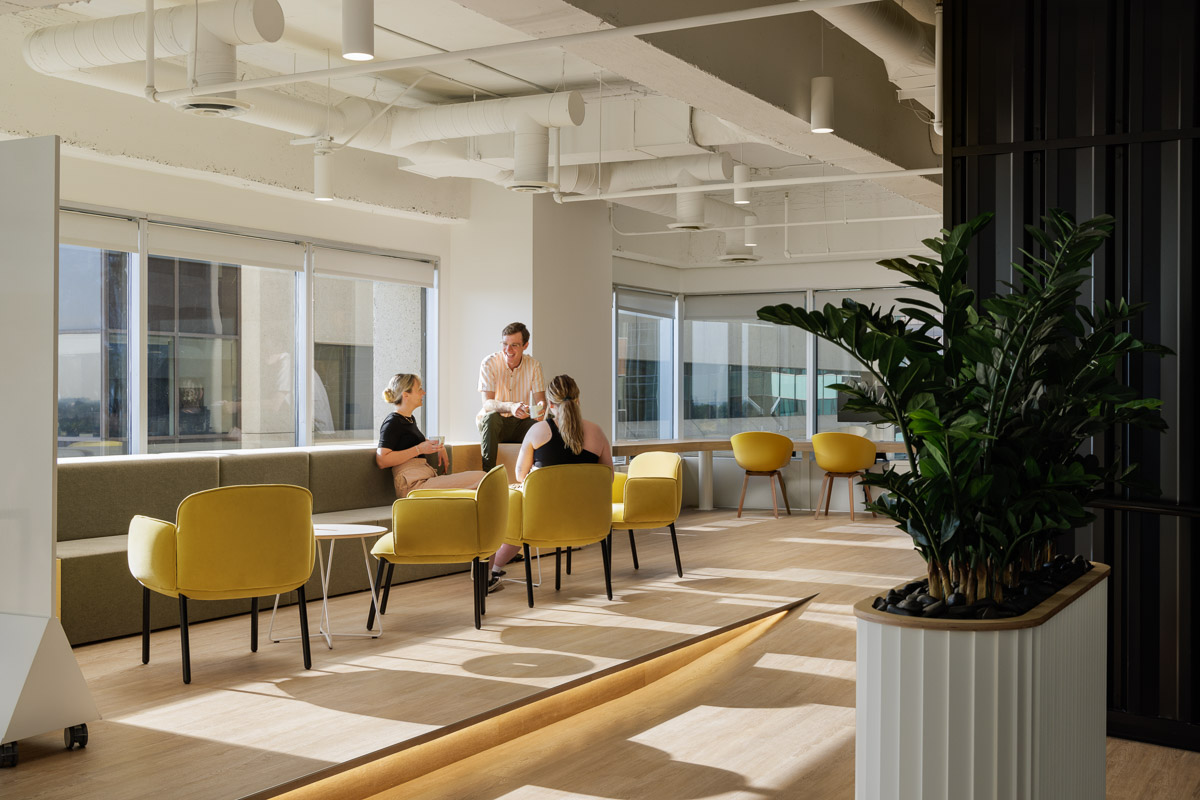Understanding Gen Z in the workplace: Inclusive and accommodating spaces
As Gen Z enters the workforce with a commitment to social responsibility and digital-native perspectives, organizations are reimagining their strategies to engage and retain this generation effectively, such as making their workplaces more inclusive and accommodating.

As Gen Z enters the workforce with a commitment to social responsibility and digital-native perspectives, organizations are reimagining their strategies to engage and retain this generation effectively, such as making their workplaces more inclusive and accommodating. The design and functionality of the modern workspace play a pivotal role in enhancing employee satisfaction and long-term commitment.
In this HQ Think Series, we delved into four significant challenges related to workplace design:

Accessibility for all
Gen Z values inclusivity and accessibility like no other generation before them. This extends beyond physical spaces and encompasses digital platforms, communication methods, and ensuring that the workplace is welcoming and accommodating to individuals of diverse abilities.
- Community: Consider spaces that promote a sense of community in the workplace. This can include communal spaces, team-building activities, and open communication channels to foster a strong sense of belonging and collaboration among employees.
- Improvement on building codes: Human-centered design considers future generations. Gen Z workplaces may push for improved building codes to enhance sustainability, energy efficiency, and safety.

Sensory health and wellness
Gen Z places a strong emphasis on mental health and overall well-being. Their heightened awareness of sensory health - including concerns such as noise levels, lighting, and ergonomic comfort - has a profound impact on their work experiences. Many organizations are working towards creating environments that promote both physical and mental well-being to enhance productivity and job satisfaction.
- Nap rooms and wellness rooms: Consider spaces that offer a retreat for employees to recharge and manage stress, promoting a healthier work-life balance.
- Light levels and colour theory: Pay attention to light levels and colour theory to create an ambiance that fosters productivity and creativity. Natural light, soothing colors, and well-placed artificial lighting can influence mood and focus.
Gender inclusivity
Gen Z expects workplaces to provide equal opportunities and create a welcoming atmosphere for individuals of all gender identities. Fostering an inclusive work environment, where traditional gender roles are challenged, allows organizations to attract and retain Gen Z employees while demonstrating a commitment to diversity.
- Gender neutral washrooms: Gender-neutral washrooms create a safe and welcoming environment for all employees.
Workplace flexibility
Gen Z values a balance between work and personal life, making flexibility a key factor in their job satisfaction.
- Encouraging mobility in the workplace: Flexible work environments are designed for collaboration, focus, and relaxation. Encouraging mobility means incorporating standing desks, ergonomic furniture, and open layouts to enable employees to move around and work where they are most productive.
- Catering to individual needs: Customizable workspaces and flexible schedules recognizes that different employees have unique needs and preferences, allowing them to work in ways that suit them best.
A human-centered lens in workplace design means that the design and layout of the workspace are primarily focused on the needs, preferences, and well-being of the individuals who will be using it. It involves considering how the physical environment can enhance the experiences, productivity, and overall satisfaction of the employees.
Gen Z values organizations that actively address societal challenges - particularly climate change. How can the interior of an office support and reflect these values? Gen Z's openness about mental health issues is a response to the growing recognition of the importance of well-being. They seek to break the stigma surrounding mental health. How can organizations make it easy for employees to take care of themselves?
By addressing issues related to accessibility, sensory health and wellness, gender inclusivity, and providing workplace flexibility, organizations can better prepare for the future of work. Moreover, these values not only align with that of Gen Z's. Integrating them into workplace design also fosters a more inclusive and equitable environment for individuals of all generations. As organizations navigate these challenges, they have an opportunity to create workspaces that resonate with Gen Z's priorities and, in doing so, benefit their entire workforce.


